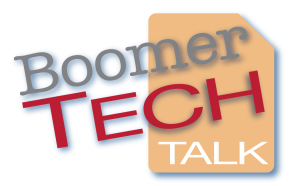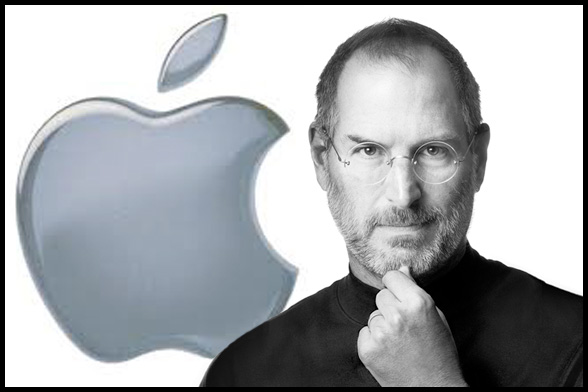Steve Jobs, The Passing of a Tech Legend
Steve Jobs, Apple’s visionary co-founder who led the technology giant from its humble beginnings in his father’s garage to the lofty status as one of America’s most valuable companies, passed away on Wednesday, October 5.
Within hours, there were already thousands of tributes that described his life, his achievements, his very public failures, and his ultimate successes in bringing products to consumers that even they didn’t know they needed until the items appeared on the shelves.
Passionate. Brilliant. Visionary. Hard-driving. High-energy. Innovator. Historical figure. Mercurial. Transformative. Just few of the terms used to describe Steve Jobs. He was all those things and more to his many fans. Steve transcended the usual role of a CEO – he became a cult figure, a guru, a hero and a rock star – and a lightning rod for criticism as well. Yet he never shied away from controversy and did not compromise in pursuing his goals of making the products he wanted to make, in the form factors that he insisted would be best.
Steve may be best remembered as a showman in every sense of the word. Those who were in his presence during a presentation found themselves quickly drawn into his famous “Reality Distortion Field,” which usually caused even the most hardened critic to praise the latest Apple innovation… or just say “wow” when a new product was introduced.
The following Steve Jobs speech is probably his most famous (and certainly the most quoted). Delivered in 2005 at a Stanford University graduation ceremony, it had a profound effect on me and so many others. Steve speaks about living each day as if it were your last, and gives the young people in the audience valuable advice about how to succeed in the world while staying true to your values and goals. For a full transcript of this speech, please see my article on Kauai Marketing.
You can read more about his life in any number of sources on the web. Our goal in this article is highlight two important areas in which Steve had the greatest impact on the Boomer generation: the introduction of game-changing technologies to the masses, and the way those products enhanced the way we work and play.
Thinking Different
The most striking thing about Steve Jobs’ legacy is the breadth of technologies that Apple brought to the average consumer. Before Steve and his partner Steve Wosniak built their first computer (the Apple I) in 1976, there were very few pre-assembled personal computer available to consumers. Think about that for a minute. We are surrounded by computers in all shapes and sizes: our cars house hundreds of them, our smartphones are sophisticated miniature computers, our appliances depend on microprocessors… yet the world before Apple had none of these. The “aha!” moment was when Steve decided that the average person should have access to low-cost computing – and that there was indeed a market for such a device. And this was not the only innovation Apple would promote… it was just the beginning.
Mass-Produced Personal Computers
In 1977, the Apple II was introduced as the first truly mass-produced personal computer. I remember using an Apple II-plus (with a whopping 64K of memory) for project management and cost estimating in 1982. A real computer! with its own green-phosphor 10 inch screen and dual 5.25″ floppy drives. I was in office heaven! Since there was no word processing software, you had to type one line at a time into a spreadsheet… but it magically crunched numbers and gave you answers in real time!
The Graphic User Interface (GUI) and the Mouse
Apple, using technology first developed at Xerox, created the Lisa computer in 1983 and later the first Macintosh in 1984. These were the first consumer personal computers that used a graphic interface coupled with a mouse to select on-screen commands. My office purchased a Lisa computer in 1983, one of the first Lisa computers in NYC. The 9 inch black and white screen displayed graphics that could actually be manipulated by a mouse… at the time, the best way to interface with a computer without typing in every command.
Desktop Publishing: the Laserwriter
The importance of this innovation is often overlooked, but was a monumental step in bringing publishing capability to graphic designers and small businesses. In 1985, for the first time, professionally produced documents could be designed and produced without having the text typeset by professionals, and the design manually created by layout artists. Businesses, schools, and other organizations could now publish their own flyers, newsletters and brochures in-house.
The PowerBook Laptop
In 1991, Apple introduced the first truly portable laptop computer, complete with a gray-scale screen, palm rest, and trackball pointing device. It even had space for a telephone modem to connect with the early online data services. The success of the early Powerbook 170/180 line prompted other manufacturers to enter into the growing portable computing field. I remember the joy of being able to carry my 180 into meetings and use a computer wherever there was an electric outlet (battery life was limited in those days).
The iMac to the Rescue
Soon after Steve Jobs returned to Apple, the company introduced the iMac in 1998. This popular all-in-one computer brought Apple back from the brink of bankruptcy. The iMac was a low-priced, well designed, full-featured computer. One thing it didn’t have was a floppy disk – an omission that critics panned but was proven to be prescient, as CDs, DVDs, and the web itself replaced floppies as the preferred method of transferring files.
The Apple Store
Pundits thought Steve was crazy to open stand-alone Apple stores. But it was a stroke of genius. Retailers in the late 1990s were notorious for pushing PCs at the expense of Apple products. In response, Apple Stores were introduced in 2001, The stores not only provided opportunities for hands-on experience with Apple products, but also were well-designed, amazingly high-profile marketing tools. With over 300 stores worldwide, the strategy has proven to be a huge success.
The iPod and iTunes
The year 2001 brought the introduction of a portable music player that radically changed the way people listened to music. The companion iTunes Store changed the music industry itself. Apple later used the same platform to sell many millions of e-books, video programs, movies and games that could be enjoyed on various models of iPods.
The iPhone
Before the iPhone was introduced in 2007, tiny keyboards and a button of stylus were the means of operating and inputting data into a phone. The iPhone ushered in the age of touch-screen smart phones. Within a short time, the iPhone became a preferred method of surfing the web, sending messages, sharing photos, and communicating with social media. Because of this one device, phones evolved from simple phones with a few additional functions into multi-featured powerful computers – that also happened to be phones.
The iPad Tablet
Several manufacturers had introduced tablet computers with little success. In 2010 Apple introduced the iPad – a tablet so revolutionary in execution that it actually created a new product category – the portable, touch-screen, multi-media device.
How Apple Changed Our Lives
Products and services that Steve Jobs and his team introduced have had significant positive effects on our daily lives. In fact, the Boomer generation spans a time period that began when these technologies were not even on the horizon, to the present where these technologies have become virtually indispensable. There are several paradigms that Steve Jobs helped change dramatically over the past 35 years.
Provide Tools for Small Business Growth
Steve helped introduce affordable personal computers, desktop publishing, and systems that did not requires significant investment in information technology (IT) support. These allowed small businesses to thrive and, in many cases, compete head-to-head with much larger corporations. The efficiencies inherent in computerized billing, bookkeeping, report preparation and other formerly labor-intensive tasks allowed small companies to do more with limited staff resources. To a great extent, the business playing field had been leveled.
The Growth of Home Offices
Personal computers, low-cost printers, modems, and relatively inexpensive software allowed many people to work from home. This supported a huge growth in the number of free-lance professionals, stay at home parents, and individual service providers who could work from home offices or start a new career without taking a position in a more traditional company. The number of start-ups exploded, and more importantly, the barrier to entry had been significantly lowered for millions of people.
Connecting with Others
Apple was among the first companies to provide an audio and visual chat system that was closely integrated with the personal computer. The iChat program was part of every computer for the past ten years, as were built-in high quality video cameras. Teleconferencing was no longer an expensive proposition, available only to large organizations. People could correspond more easily, and face-to-face contact could be accomplished remotely from any location with an internet connection. With FaceTime on the latest mobile devices, this connectivity has been extended to everyone with an iPhone, iPad or Apple computer. The world got even smaller.
Our Elderly Parents Go Online
The combination of ease of use, value pricing, and close integration of hardware and software has allowed many people to easily train their parents to use computers – often for the first time. In addition, speech recognition software that converts speech to text, programs that speak written documents, and audio books allow individuals with visual or physical difficulties to access computing technology. The barriers elderly people had faced when attempting to use computers have been eliminated, and for most, the experience as a whole was much more enjoyable.
When you look at all the lives that Steve Jobs has touched in some way, he truly was an innovator without peer. He was one of the lucky few who did indeed leave this world a better place for everyone. Steve will be missed by millions, but his legacy will surely continue to make our lives better and more fulfilling.

